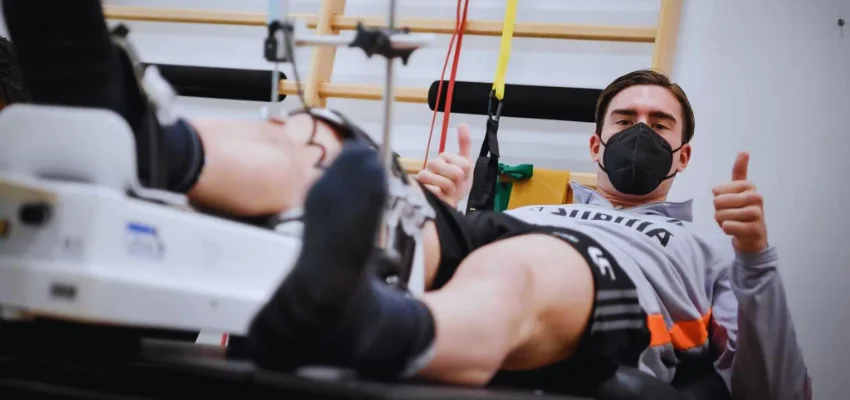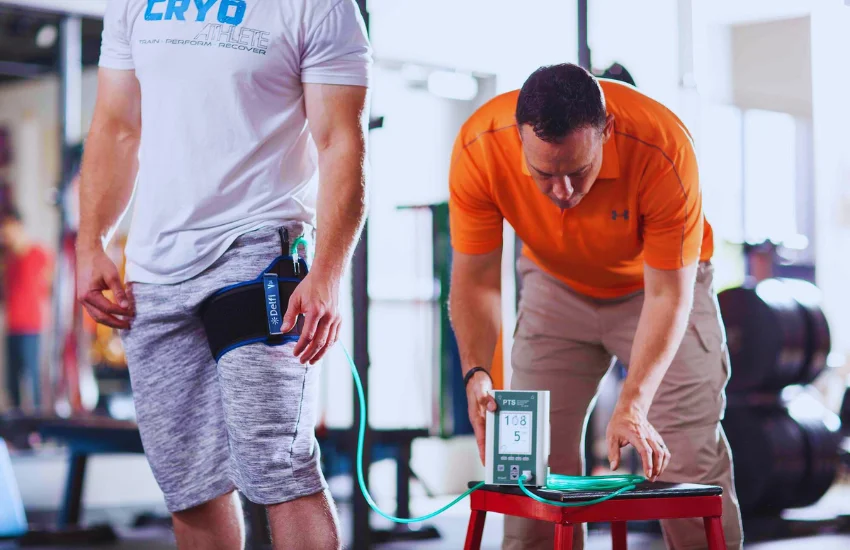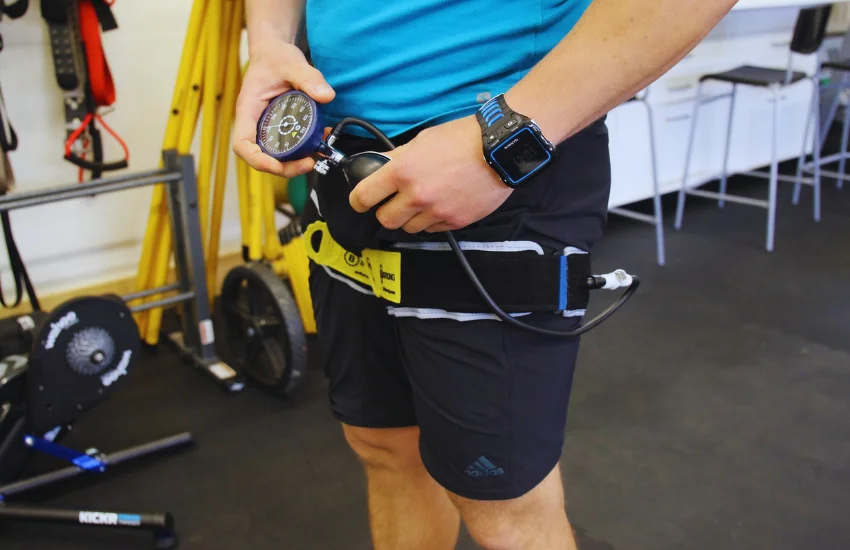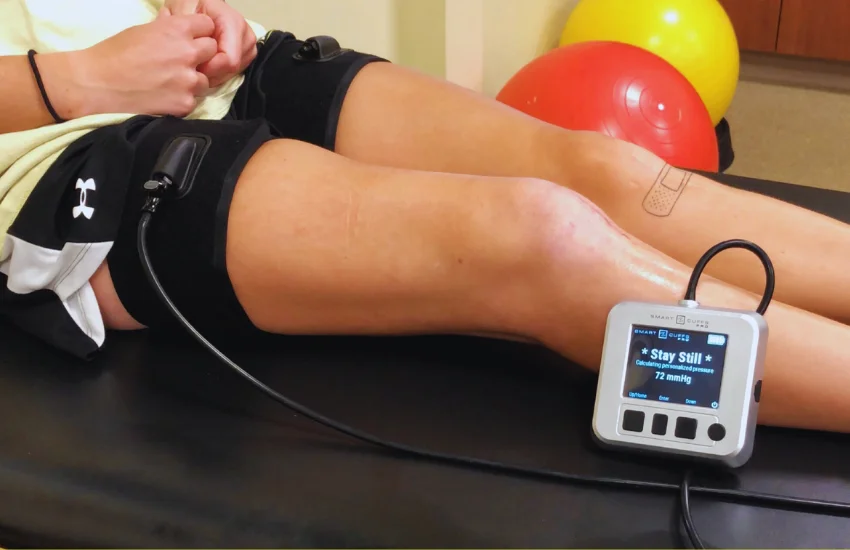40 Mints Before
Blood Flow Restriction Training in Physical Therapy Utilization USA
Blood Flow Restriction Training in Physical Therapy (Blood flow restriction training) (BFRT) or anchor physical therapy in USA of Utilization is an innovative strategy utilized in physical therapy to improve muscle strength and hypertrophy with lower-intensity exercises. This method uses ultrasound flow restriction bands or cuffs to restrict blood discharge to the forces during training partially. Hear explores the benefits, applications, and science behind anchor pelvic physical therapy, making it an essential read for those interested in advanced physical therapy techniques with Intrinsic Motivation.
Blood Flow Restriction Training in Physical Therapy (BFRT PT) has gained significant concentration in physical therapy. Anchor physical therapy broomfield innovative approach allows individuals to achieve substantial muscle gains and strength improvements without heavy weights. We will explore the benefits, mechanisms, and practical applications of BFRT, making it easy for both patients and physical therapists to understand also a Gym Workout Routine.
Understanding blood flow restriction And Athletico Physical Therapy

bfr exercise in Physical Therapy involves using specialized bands or cuffs, often called blood flow restriction bands, to restrict venous blood flow from a working muscle while maintaining arterial inflow. Blood restriction therapy for athletes near me restriction creates a hypoxic atmosphere within the power, stimulating a cascade of physiological responses that lead to muscle growth and strength gains and improved your restriction of blood flow with physical health.
How Does Blood Flow Restriction Training in Physical Therapy Work?

When blood flow is restricted during training or drayer physical therapy, the working muscles experience a reduced oxygen supply. This hypoxic condition causes an accumulation of metabolites, such as lactate, which increases muscle protein synthesis. Additionally, restriction of blood flow activates fast-twitch muscle fibres, typically recruited during high-intensity exercises.
The circulatory method plays a crucial role in this process. Blood flow restriction bands compress blood vessels, restricting blood flow and restrictive blood flow therapy. This restriction causes a buildup of metabolic byproducts, enhancing the training effect even at lower intensities with Your Path to Quality Sleep.
Benefits of Blood Flow Restriction Training ( BFRT Training)

1. Increases Muscle Strength and Size:
One of the primary benefits of does caffeine restrict blood flow is its capability to increase muscle strength and size. Studies have shown that BFRT can lead to significant hypertrophy and strength gains comparable to traditional high-intensity training.
2. Reduces Joint Stress:
High-intensity exercises can be challenging for someone with joint issues or those recovering from surgery. Physical therapy blood flow restriction allows for effective muscle strengthening without placing excessive stress on the joints.
3. Enhances Rehabilitation:
Physical therapists often incorporate blood flow restriction therapy into rehabilitation programs. It accelerates recovery by promoting muscle growth and improving function in injured or post-operative patients.
4. Improves Cardiovascular Health:
BFRT has been shown to affect the cardiovascular system positively. The increased blood pressure during restricted flow training can improve vascular function and cardiovascular Physical Health .
4. Facilitates Training for Special Populations:
Older adults and individuals with peripheral arterial disease or symptoms of poor circulation can benefit from BFRT. The low-intensity nature of the training makes it accessible and safe for these populations.
Practical Applications of Blood Flow Restriction Training

Incorporating BFRT in Strength Training
The Utilization of Blood Flow Restriction Training in Physical Therapy can incorporate Blood Flow Restriction Training in Physical Therapy into existing strength training programs. By using blood flow restriction cuffs, patients can perform exercises at a lower intensity while still achieving substantial muscle activation and growth.
Rehabilitation Programs
BFRT is particularly beneficial in rehabilitation settings. Physical therapists can design customized programs for patients recovering from injuries or surgeries that utilize blood flow restriction therapy to accelerate recovery and restore function.
Enhancing Athletic Performance
Athletes can also be satisfied with blood flow restriction training. By integrating BFRT into their training regimens, athletes can achieve more significant muscle hypertrophy and strength without needing heavy weights, reducing the risk of overuse injuries.
Safety Considerations

While blood flow restriction training is generally safe, proper guidelines must be followed to avoid potential risks. Physical therapists should ensure that patients are correctly fitted with blood flow restriction bands and that the pressure applied is within safe limits. Additionally, someone with certain medical conditions, such as severe cardiovascular disease, should consult their healthcare provider before starting BFRT.
Conclusion The Utilization of Blood Flow Restriction Training in Physical Therapy

Blood flow restriction training (BFRT) is a powerful tool in physical therapy and strength training. Its ability to stimulate strength growth and gains at lower intensities makes it an invaluable addition to rehabilitation programs and athletic training regimens. By understanding the mechanisms and benefits of BFRT, physical therapists can harness its potential to improve patient outcomes and enhance overall fitness.
Today, incorporate blood flow restriction training into your physical therapy practice and experience its transformative benefits. Whether you are a patient seeking star physical therapy or results physical therapy with an athlete looking to enhance performance, BFRT can help you achieve your goals safely and actually.
FAQs | Frequently Asked Questions
While many can benefit from BFRT, consulting with a healthcare provider to provide its safety based on individual health conditions is essential.
do edibles restrict blood flow
Yes, The edibles must restrict blood flow in human body. A study has shown that both consuming THC edibles and smoking marijuana can lead to impaired blood vessel dilation, potentially increasing cardiovascular risk for the human.
does coffee restrict blood flow
Yes, coffee can temporarily ( on the Time ) restrict blood flow in certain Whole human areas of the body
How does BFRT benefit physical therapy?
BFRT helps muscle recovery, strength training, and rehabilitation, making it a helpful tool in physical therapy.
Are there any risks associated with BFRT?
BFRT is generally safe when performed under professional supervision. However, improper use can cause Use to complications, so it should always be done with proper guidance.
What is blood flow restriction training? what is BFRT
Blood flow restriction training involves using bands or cuffs to restrict blood flow to muscles during exercise, promoting strength and hypertrophy with lower intensity.
How does BFRT compare to traditional strength training?
BFRT can achieve similar muscle gains to traditional strength training but with lower intensity, reducing the risk of strain and injury.
Baystate Physical Therapy specializes in designing individualized programs of evidence-based rehabilitation for muscle and joint disorders. With multiple clinics strategically located throughout the Northeast They focus on rehabilitation of function and mobility using established clinical techniques.
However, Breakthrough Physical Therapy provides individualized care that focuses on long-term health. It typically incorporates cutting-edge techniques for therapy and emphasizes patient education to avoid injury in the future.
Facebook
Instagram
Whatsapp
Youtube
Latest News
COVID-19 Data Tracker – Centers for Disease Control
September 15, 2024 1 Comment
Diseases
Bedlington Terrier Infectious Disease Care and Health
September 14, 2024 0
Nutrition
Evolving Science Changes the Way We Talk about Weight Loss
August 28, 2024 0
Physical Therapy
The Benefits of Alternating Ice and Heat: A Guide to Effective Therapy
Gluten-free Bread that Tastes Good? What I Learned from Trying Every Loaf
9 Home Remedies Backed by Science
August 18, 2024 0
You might also like
COVID-19 Data Tracker – Centers for Disease Control
September 15, 2024 1 Comment

Diseases
Bedlington Terrier Infectious Disease Care and Health
September 14, 2024 0

Nutrition
Evolving Science Changes the Way We Talk about Weight Loss
August 28, 2024 0

Physical Therapy
The Benefits of Alternating Ice and Heat: A Guide to Effective Therapy
Gluten-free Bread that Tastes Good? What I Learned from Trying Every Loaf
August 23, 2024 0


